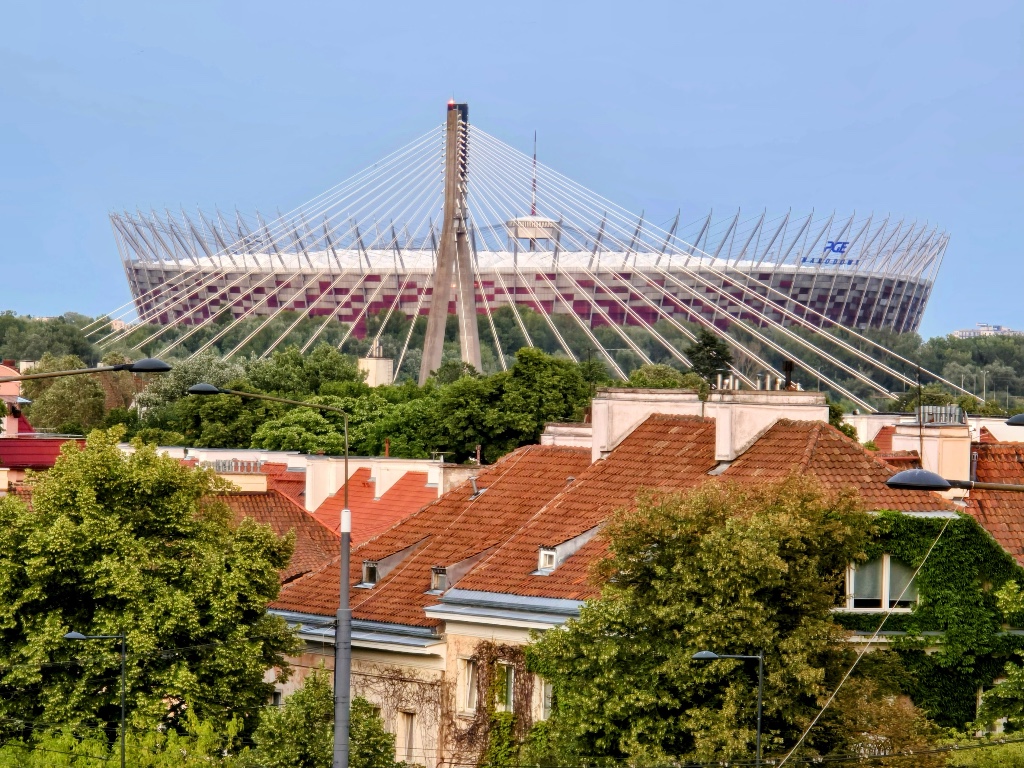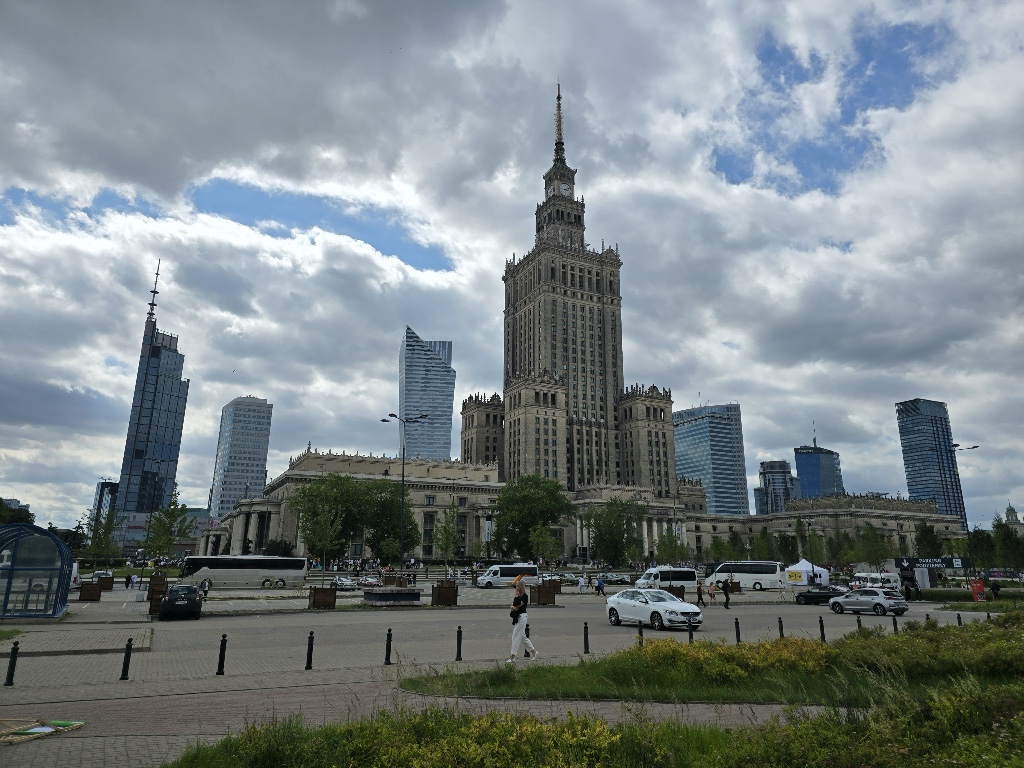
After spending a lovely few weeks in Tirana resetting our visas we decided to come to Poland, as the weather during the summer months are known for being breezy and comfortable. We were lucky enough to arrive in time for Kupala night, or summer solstice festival. Kupala night is full of rituals in celebration of summer. Women young and old are seen donning flower wreaths in their hair. Gathering herbs, singing, dancing, ritual bathing and fire jumping are some of the main festivities of the celebration. We did not see any fire jumping in Old Town, but there were plenty of fire dancers in the square preforming for large crowds of families.
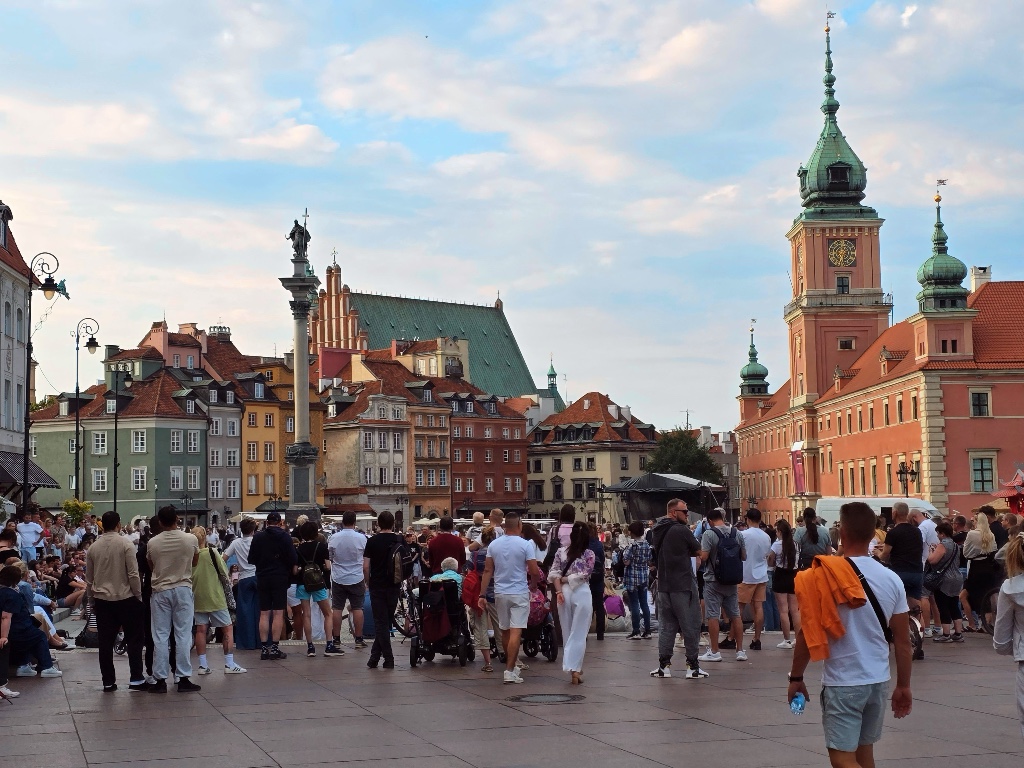
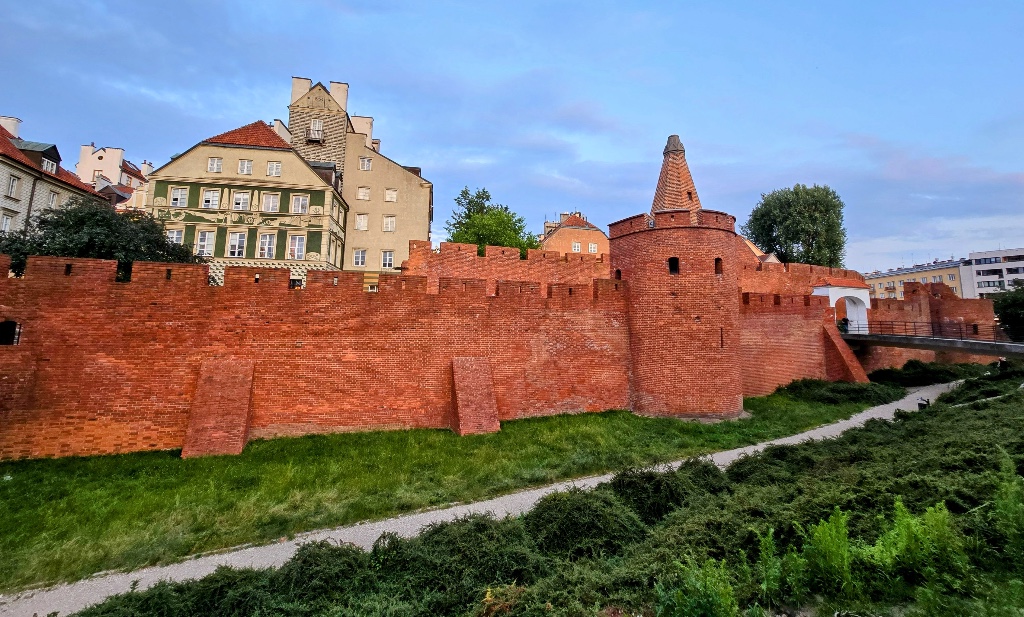
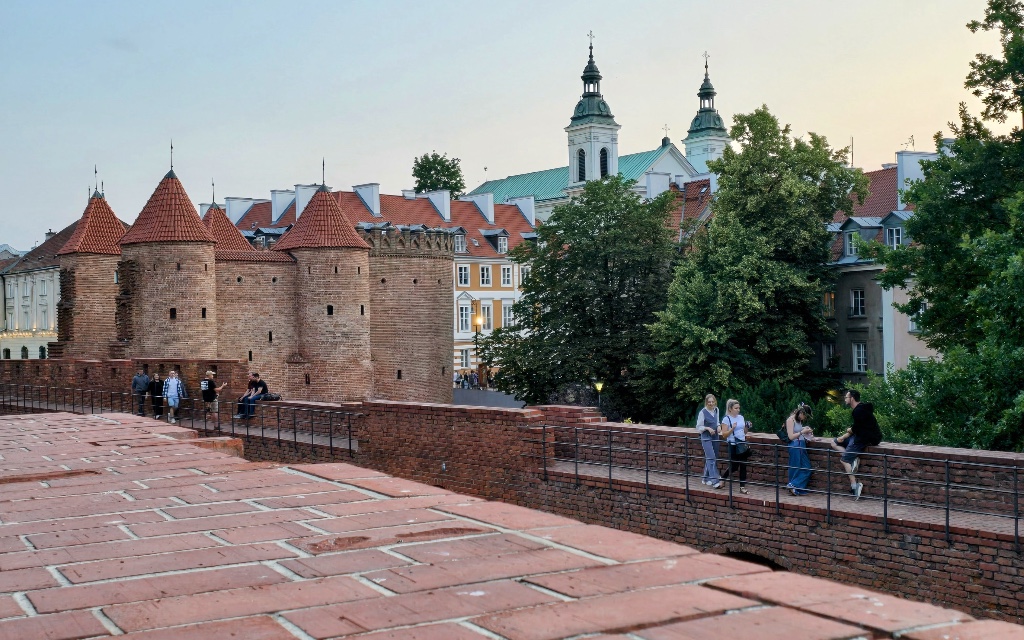
These are a seemingly endless supply of enormous churches built throughout the centuries, some of the oldest and most notable reside in Old Town. St. Anne’s, (founded in 1454) marks the entrance to the old city. It was created by Duchess Masovia Anna Fiodorowna for Bernardine Friars (Order of the Friars Minor). It was rebuilt many times throughout history, the latest being after WWII by architect Beata Trylinska between the 1940s-70s.
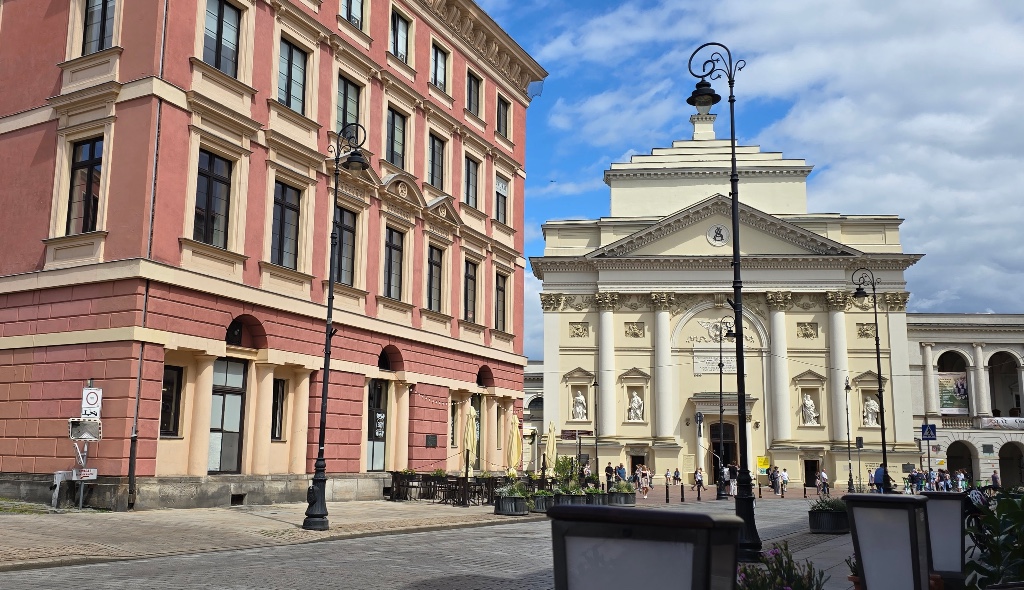
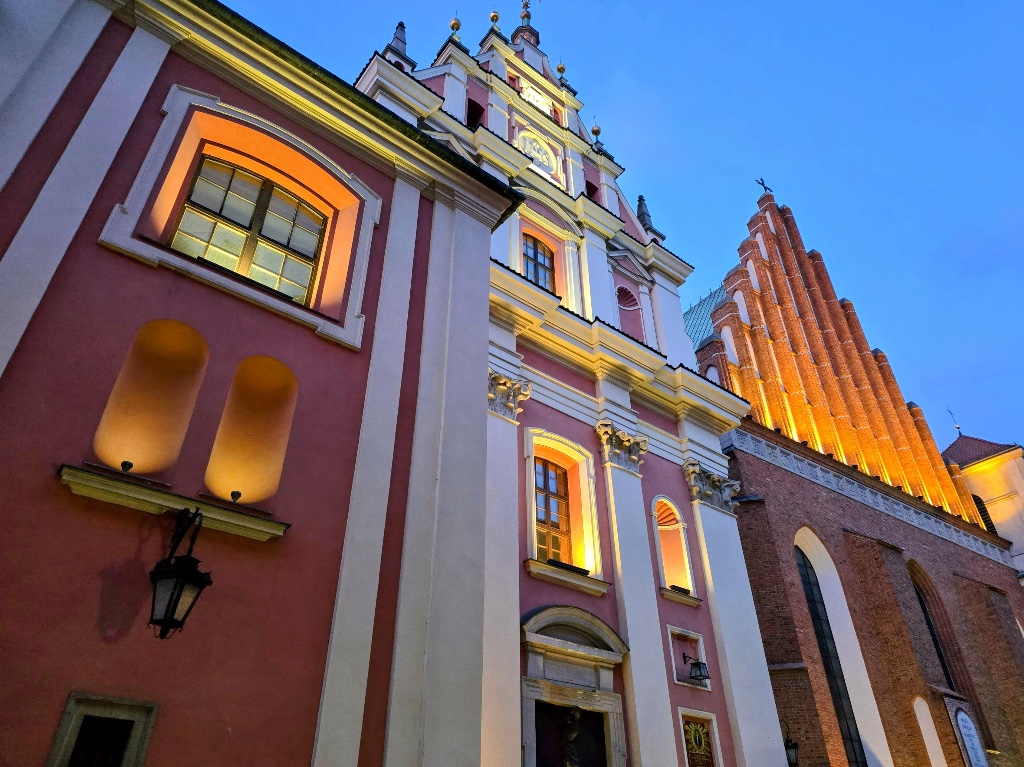
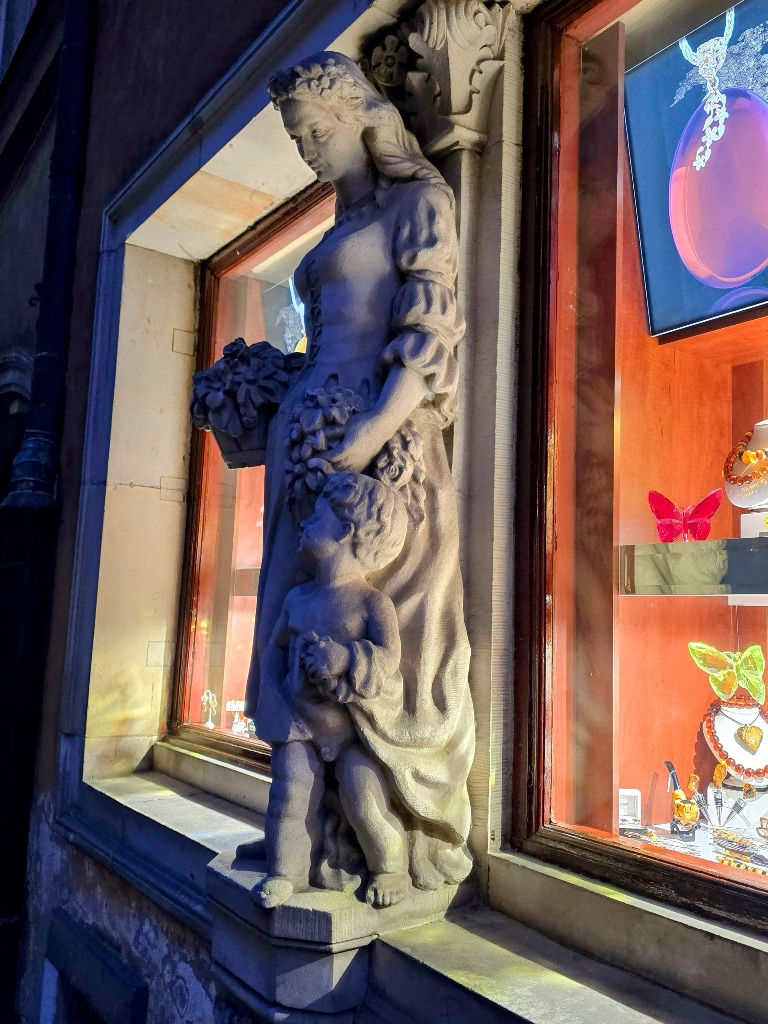
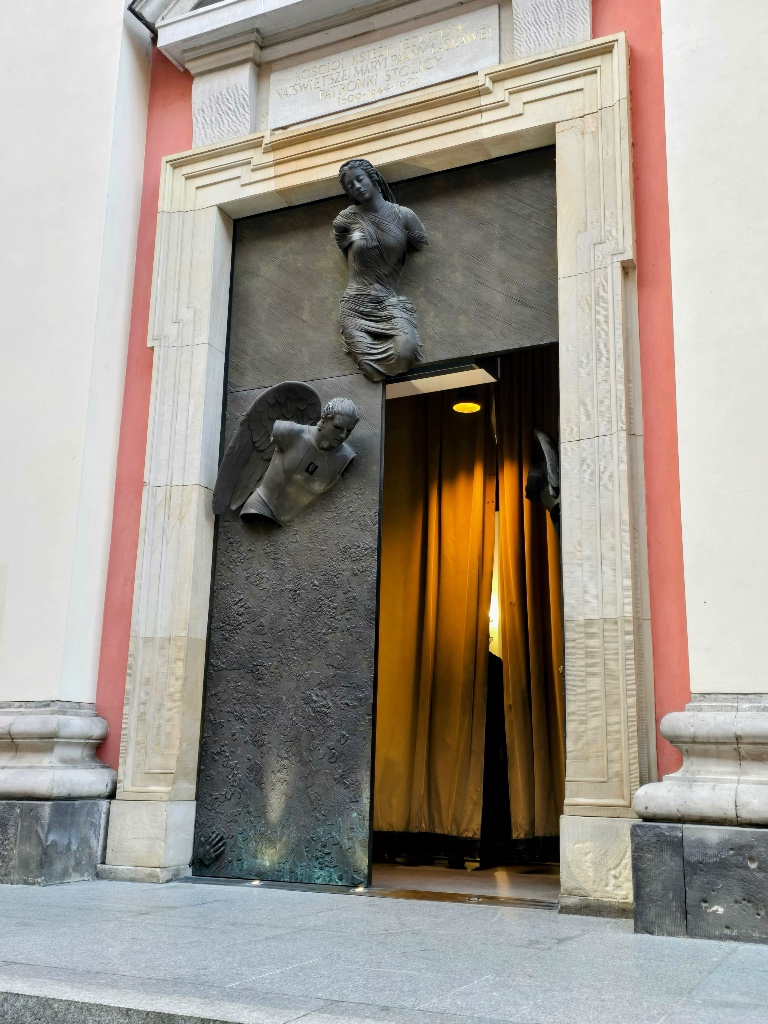
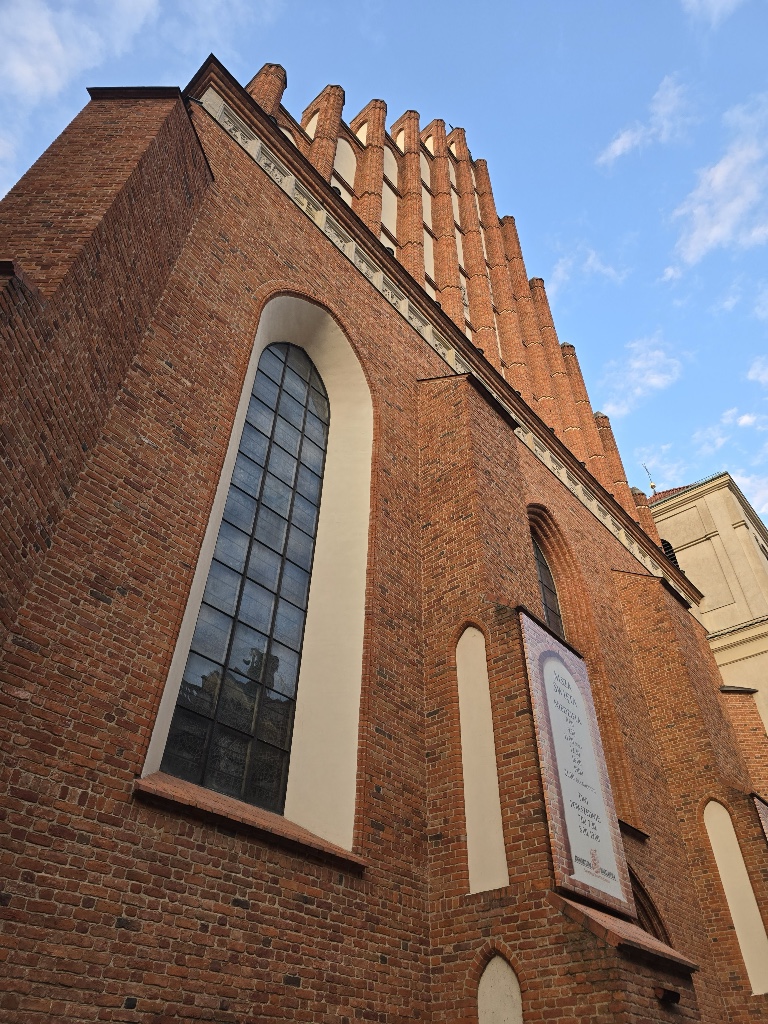
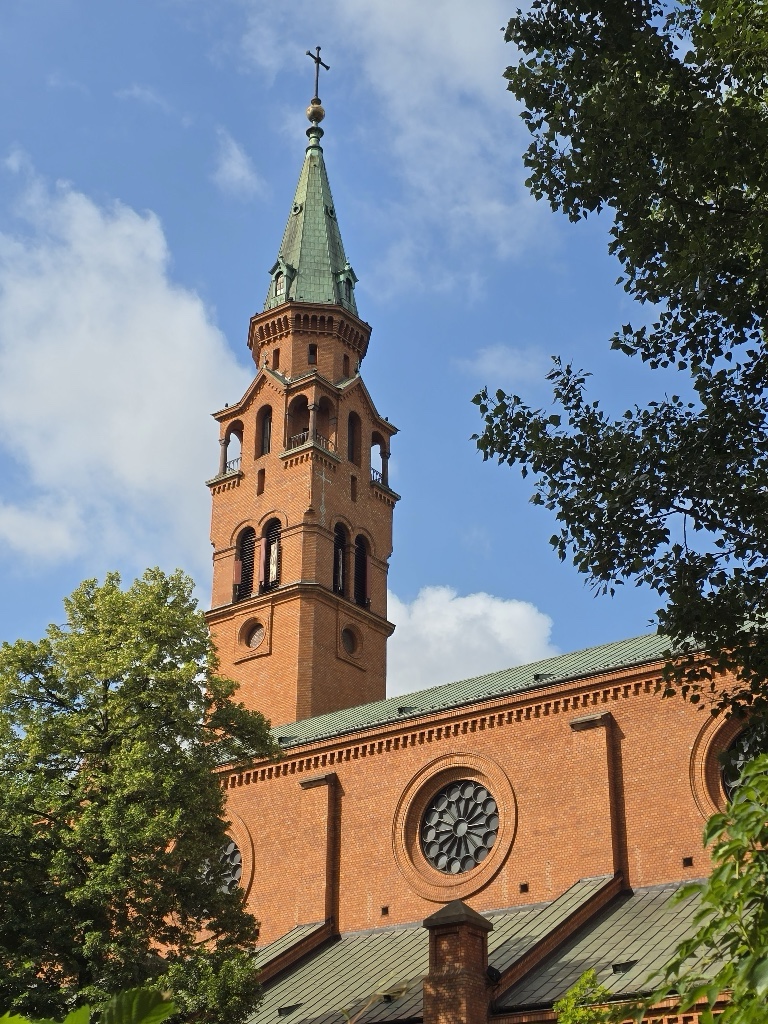
The Carmelite Church (1681) was the place of Frederic Chopin’s first employment; he played a recital on the church’s organ.
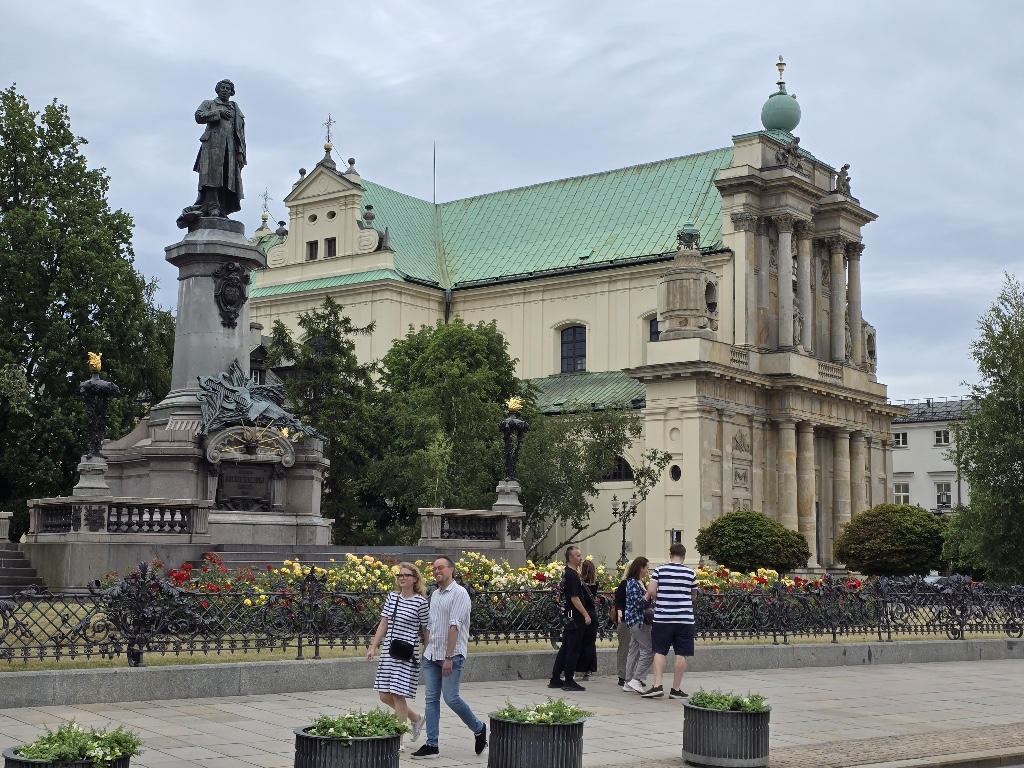
Warsaw Old Town contains loads of historic buildings from the 17th and 18th centuries. It is like stepping back in time, with the cobblestone streets, the bustling market square, and loads of monumental churches. The Old Town Market Place dates back to the 13th century, and is considered the heart of town. The buildings were rebuilt after the great fire of 1607 in late-renaissance style. Though most of the buildings were bombed in WWII, they were carefully restored to their near original form.
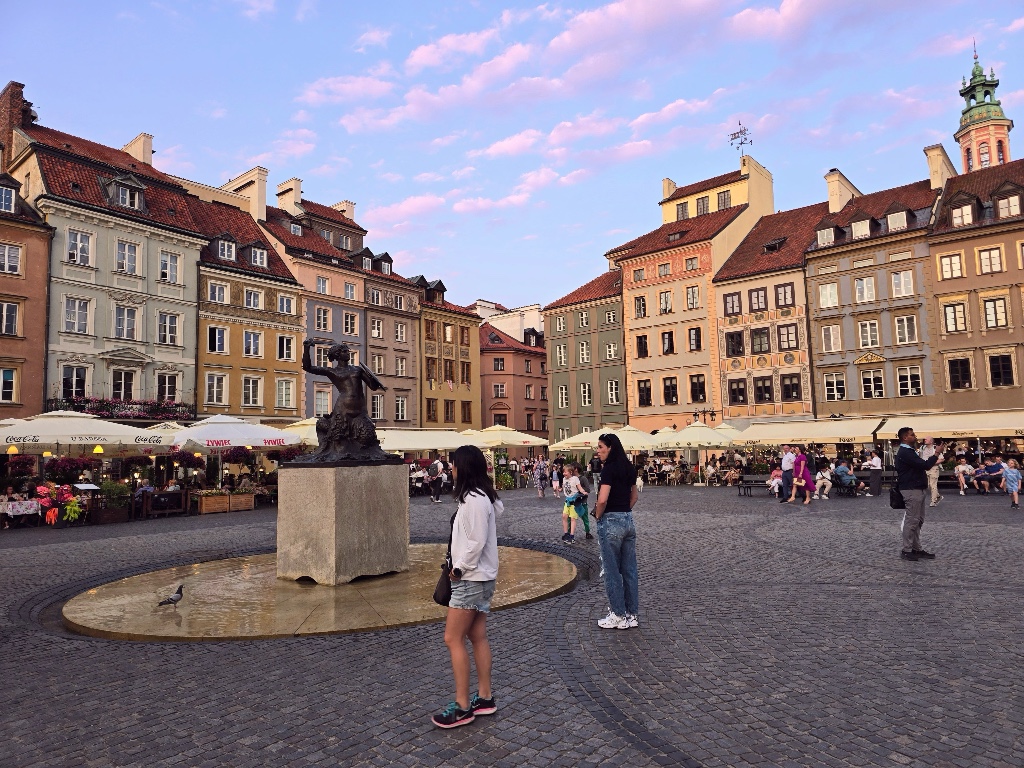
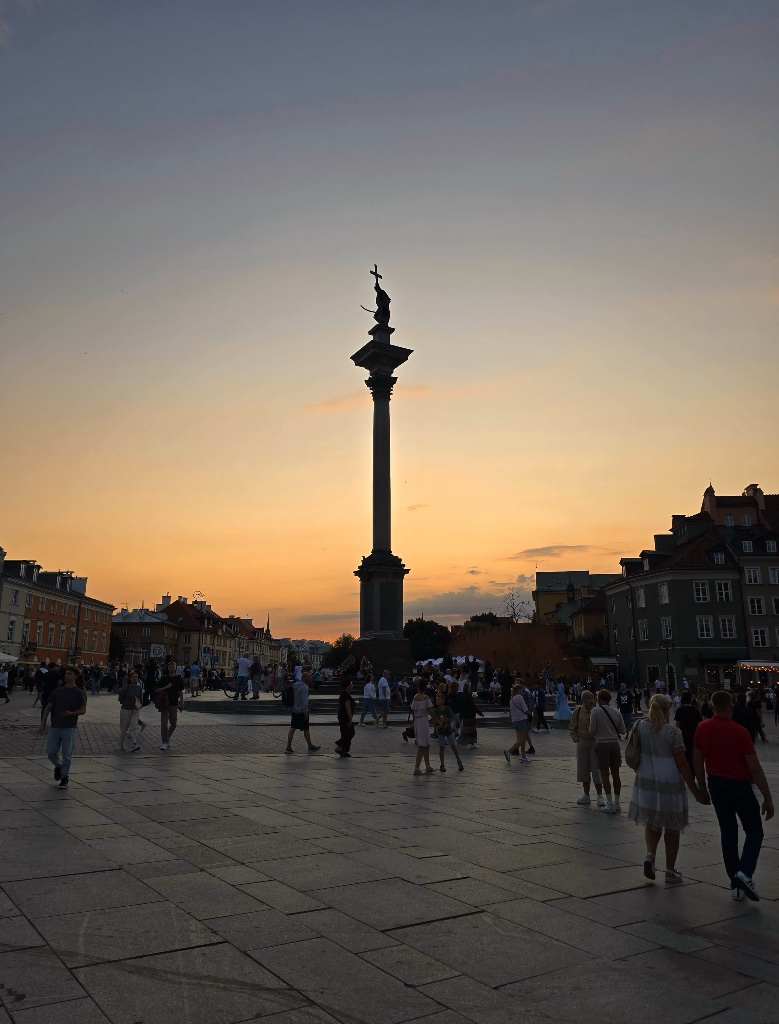
Sigismund’s Column is located in Castle Square, one of the three main squares in Old Town. It was erected by King Wladyslaw IV Vasa (Sigismund’s son) in 1644 to commemorate Sigismund III Vasa, who was responsible for moving the capital of Poland from Krakow to Warsaw. When revealed, it caused controversy with the Church; only the Christ or Virgin Mary were able to be displayed in such a fashion. The king holds a sabre and latin cross, wearing archaized armor and an elaborate coronation robe. The monument symbolizes royal virtues both secular and sacral. Being destroyed during WWII, it was later repaired in 1949 using granite close to the original columns extraction.

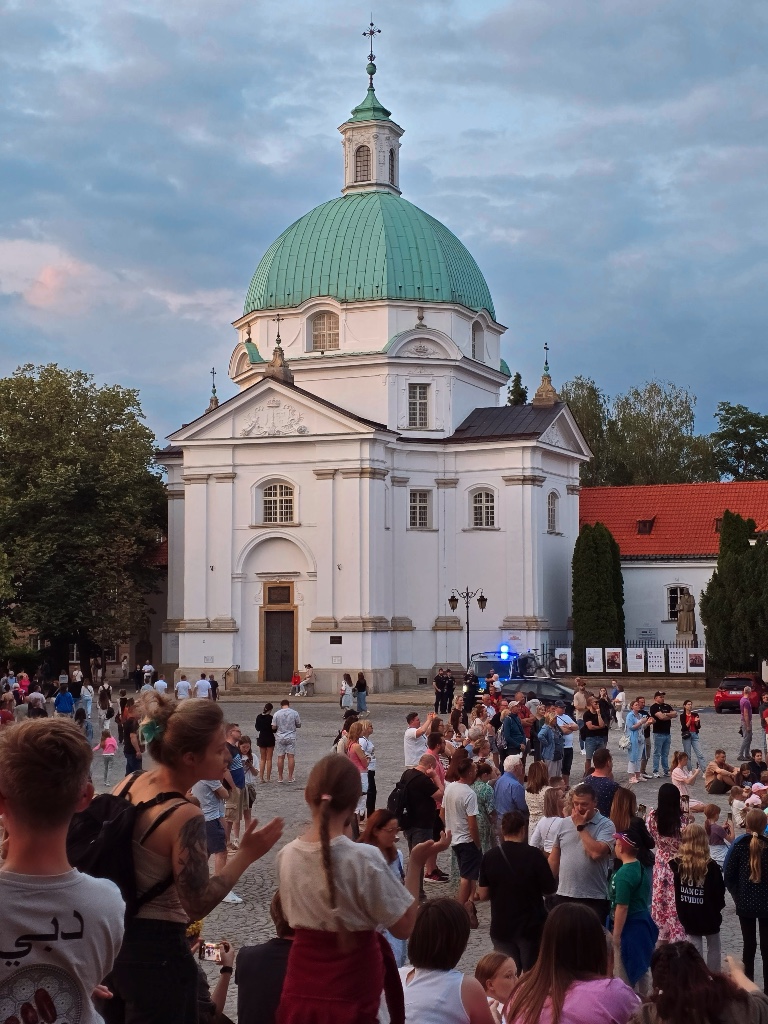
Not far from Old Town is the Multimedialny Park Fountain, a lovely starting place for a leisurely stroll by the Vistula River. At night they have a light show in the fountain with music, but the night we went was too crowded, so we revisited during the day for a river walk. Along the waterfront are cafes, small restaurants and bars on boats, unfortunately providing little shade. It was a cloudless and warm summer day, so we enjoyed an iced coffee on a slightly covered patio instead. I imagine at night it is amazing, as the evenings here get to be in the teens still in June. We do feel really spoiled by the weather being as mild as it is, so far.
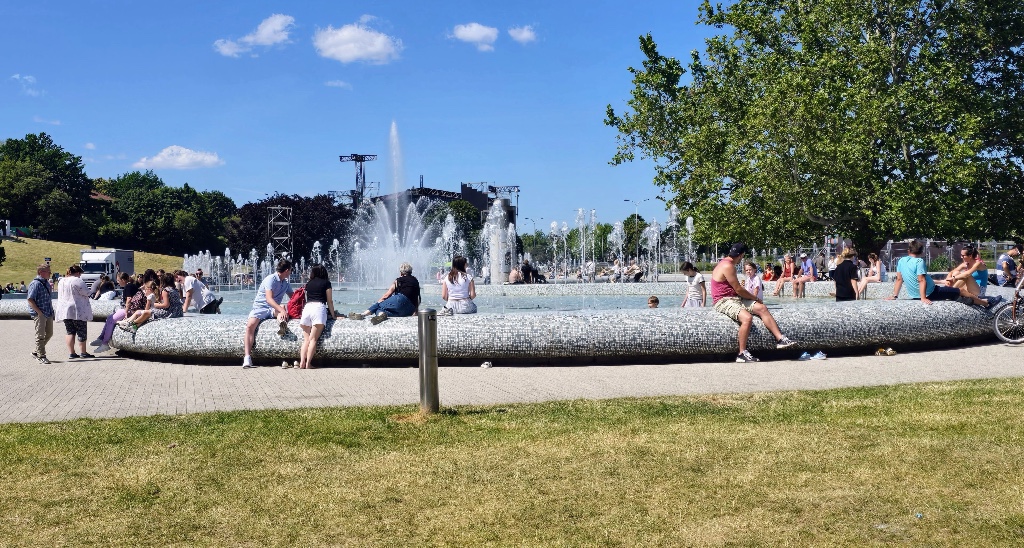
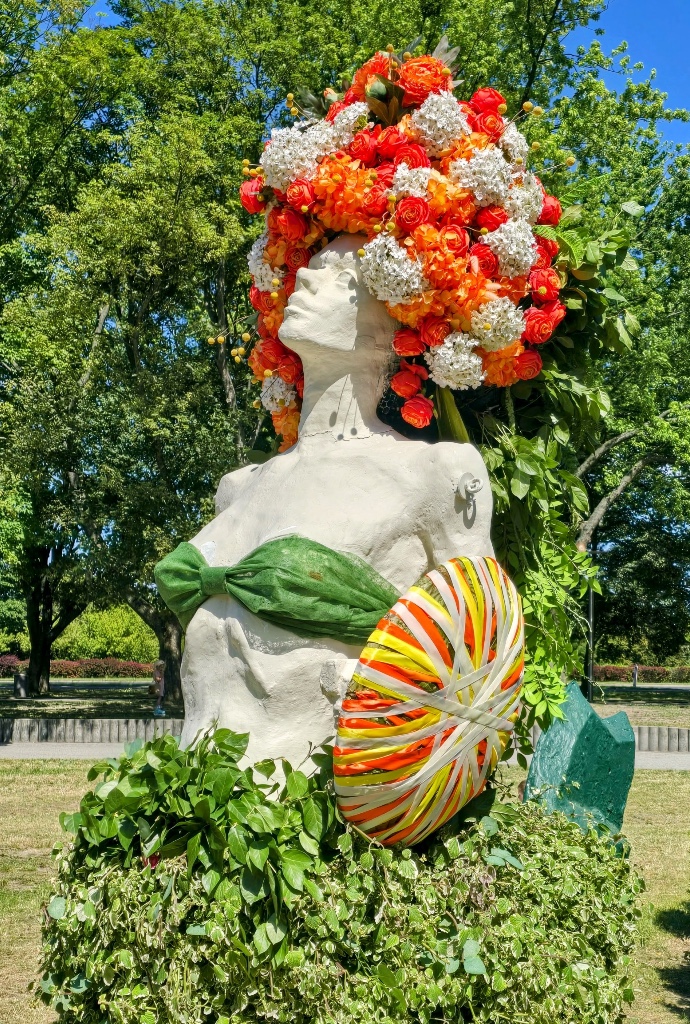
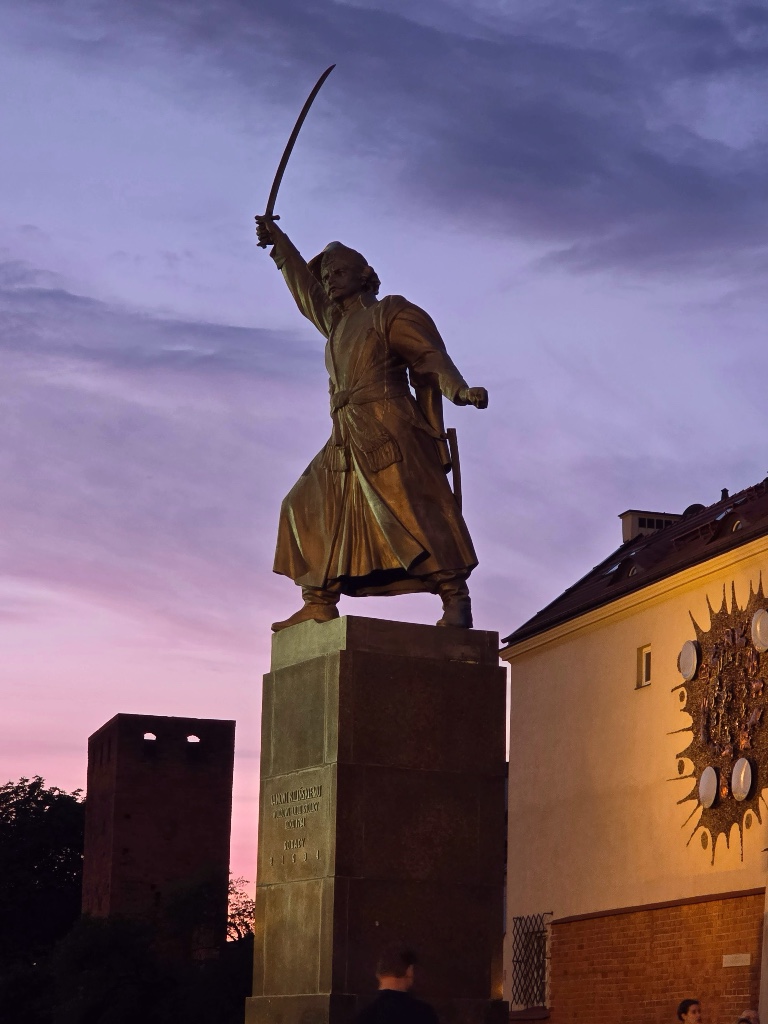
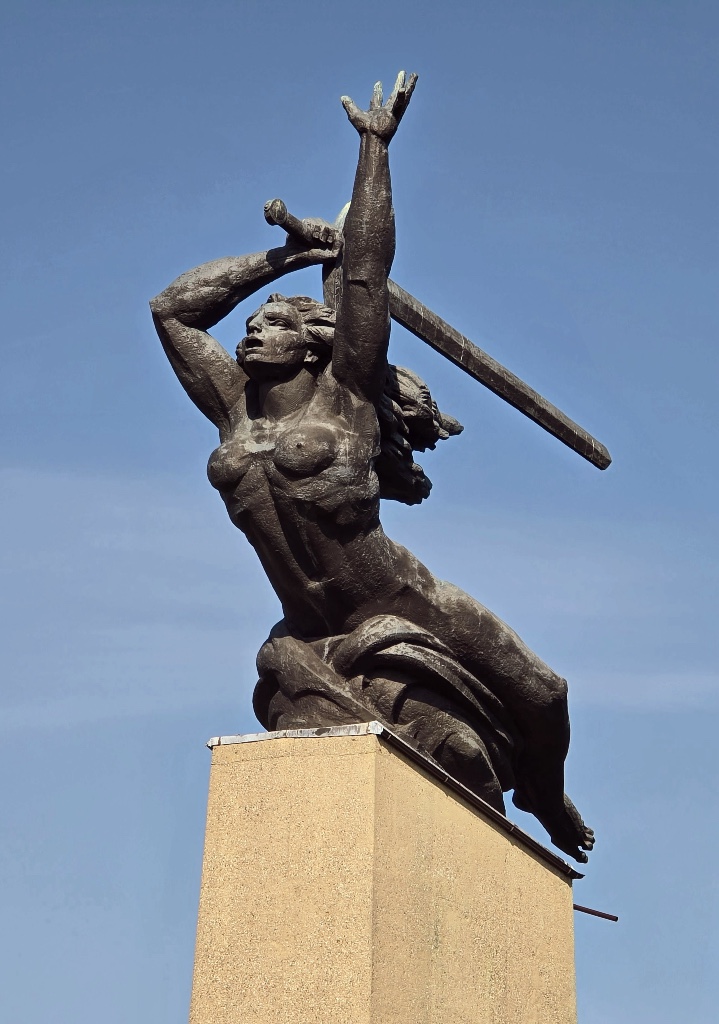
There is some incredible sculpture throughout the city. In Krasinski square stands the towering 10 meter Warsaw Uprising Monument. The bronze landmark was created to commemorate the sacrifice of anti-Nazi resistance fighters in 1944. It is considered the most important post war monument in Warsaw. The monument is in two parts; the first depicting insurgents running from a collapsing building, the second shows insurgents descending into a manhole. Warsaw’s sewer systems were used to move the resistance across the then German occupied territory during the uprising, including evacuating 5300 resistance fighters from Old Town. The monument is an emotional tribute, a remarkable piece of art reflecting a dark time in Polish history.
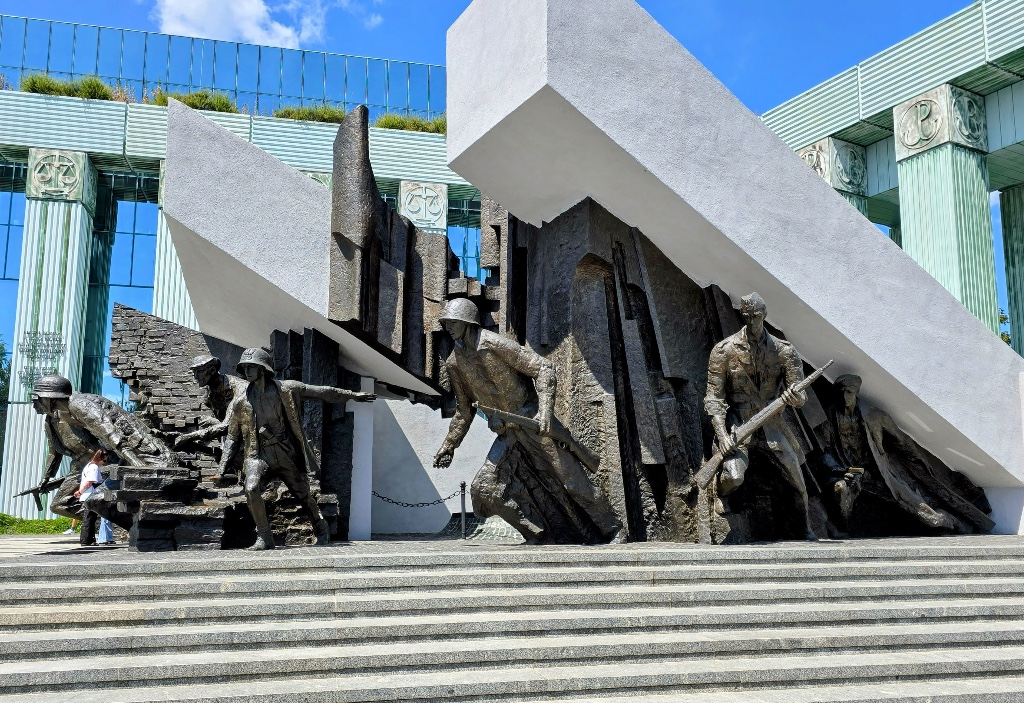
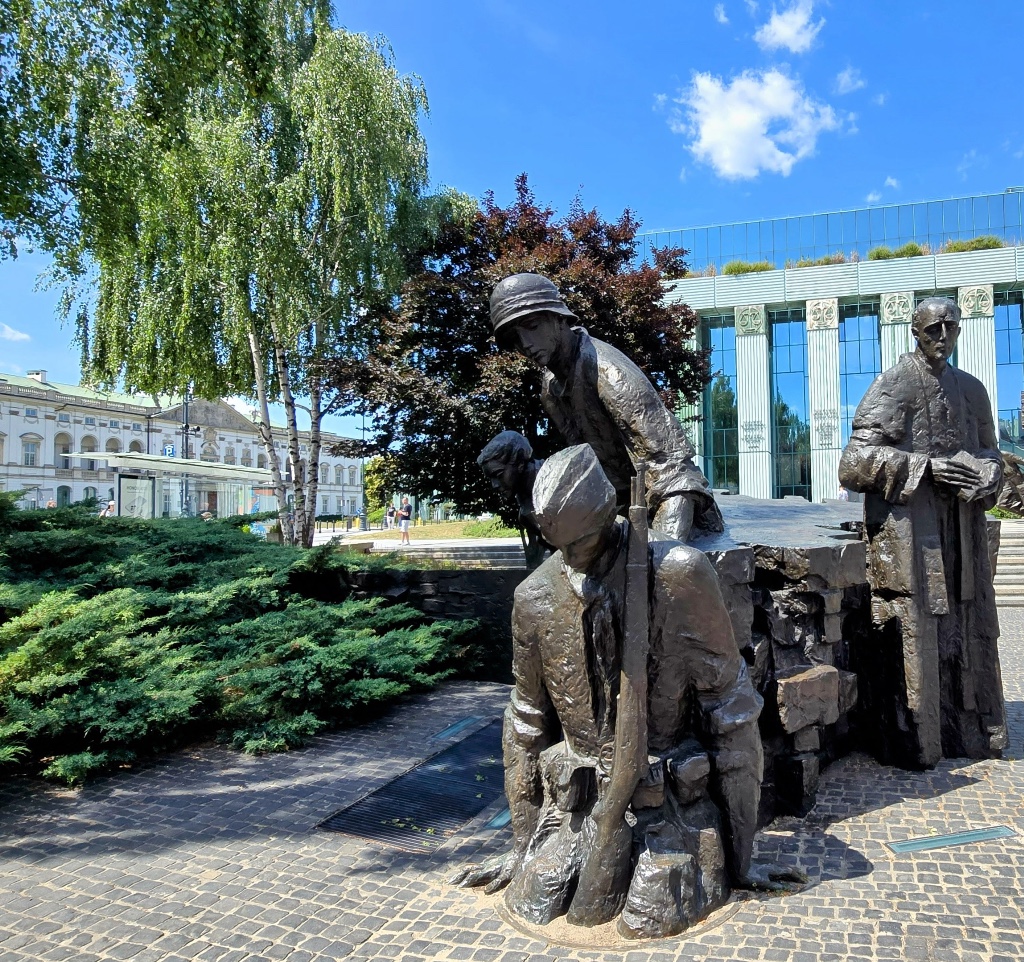
Directly behind the monument lies the Supreme Court Building. In use since 1999, The building is most known for its 86 latin inscriptions along the facade.
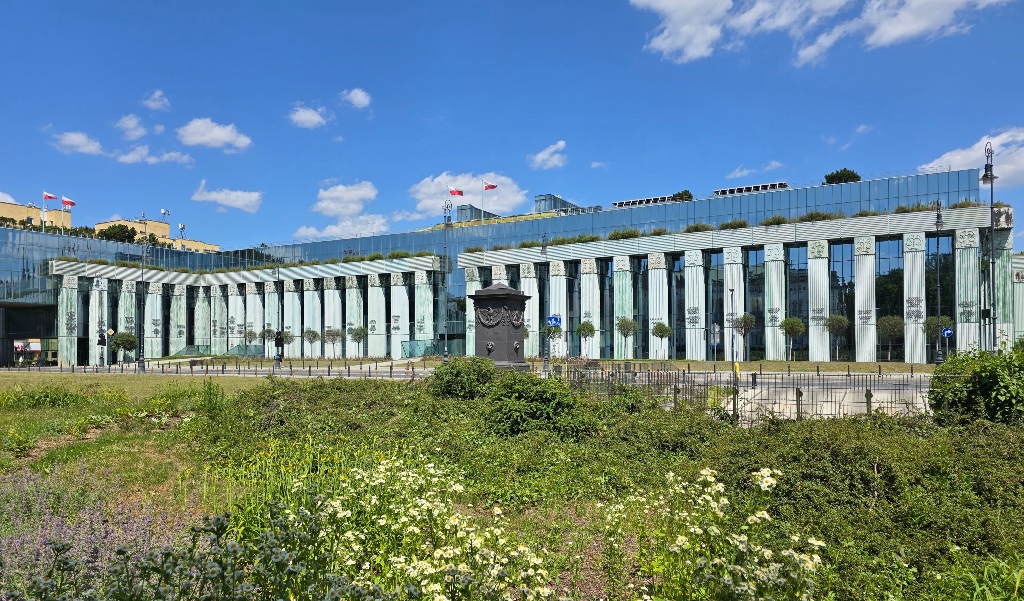
Across the street is the Krasinski Palace, also known as the Palace of the Commonwealth. Originally erected in 1677-33, the Baroque palace was badly damaged during WWII, requiring a rebuild in the mid 20th century. Only 5% of the Palace library’s manuscripts, books and prints remained after the destruction by the Nazi’s after the Warsaw Uprising. For the first time in May of 2024, the Palace is open for visitors. It is home to a permanent exhibition of the remaining works from the original Palace library and is free to visitors every day except Tuesday. The adjacent gardens are beautifully manicured and a lovely reprieve from the bustle of the city.
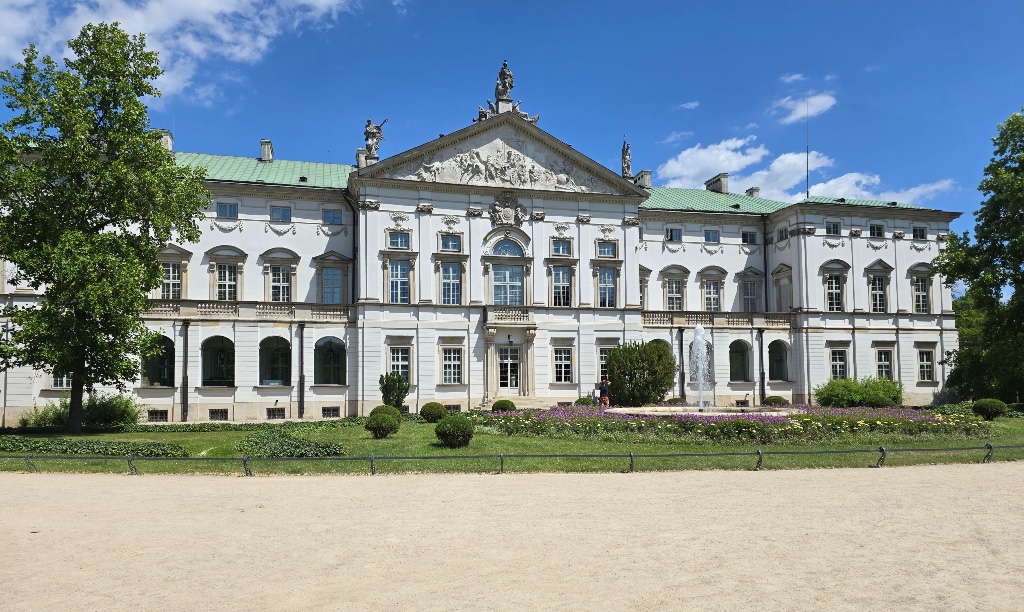
Slightly outside of central Warsaw on the other side of the Vistula River, is the Muzeum Sztuki Fantastycznej, a small but cool gallery featuring Polish surrealist artists. At the time of our stay we were lucky enough to see a Beksinski exhibit; in my humble opinion, the greatest of all Polish artists. His work is both beautiful, dark, and emotional. You can easily spend hours dissecting each work, the amount of detail and layers of each piece always revealing something new to the viewer. Pictures pale in comparison to the works in real life, but I couldn’t help taking a few to share with those who may be interested. We were so lucky to have seen another collection of his works at the Archdiocese Museum in Old Town on the last day it was available.
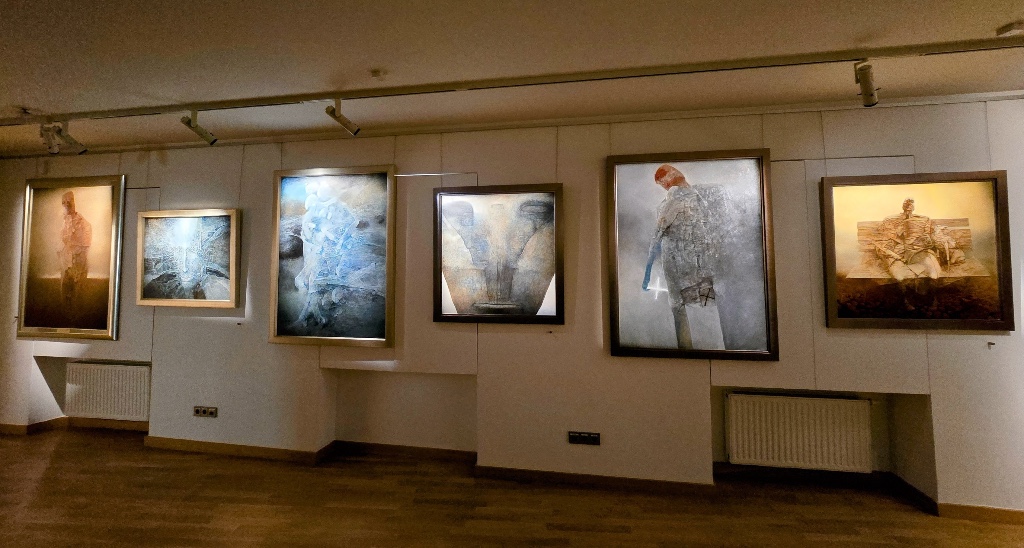

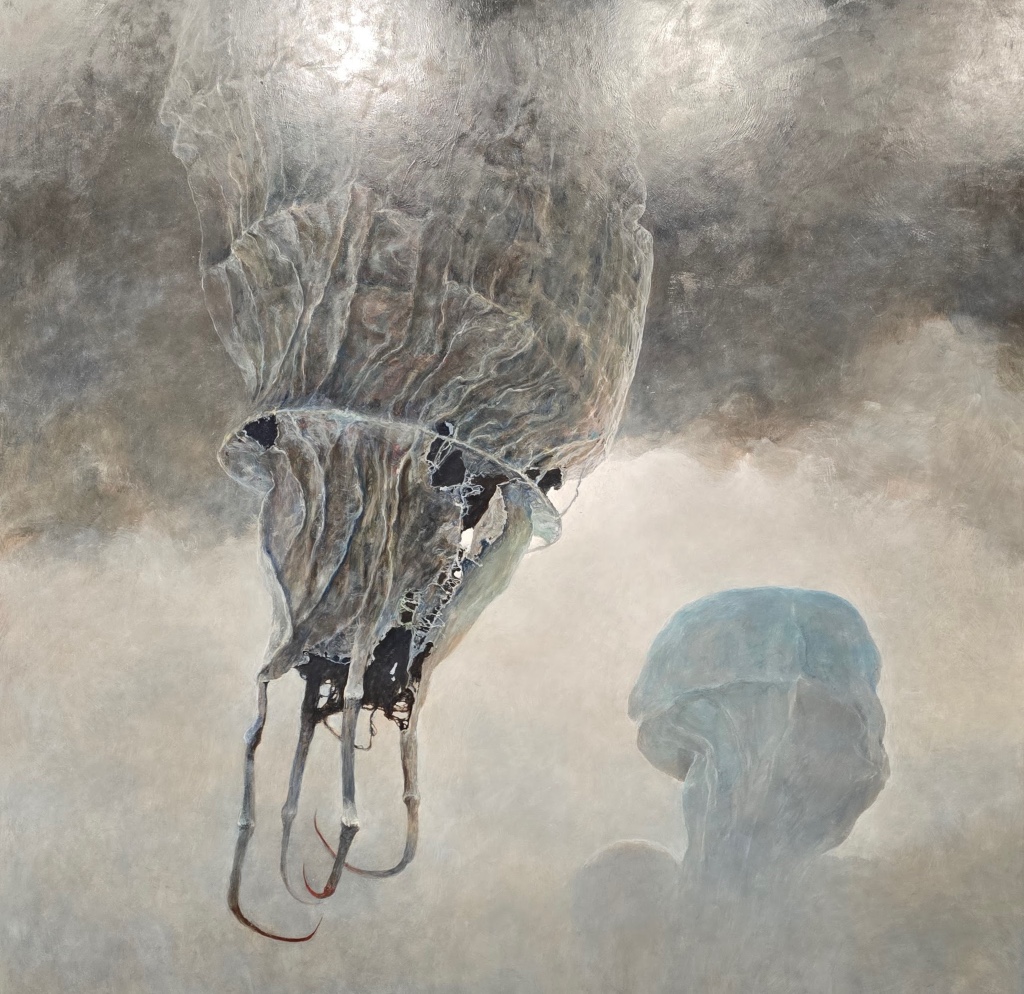
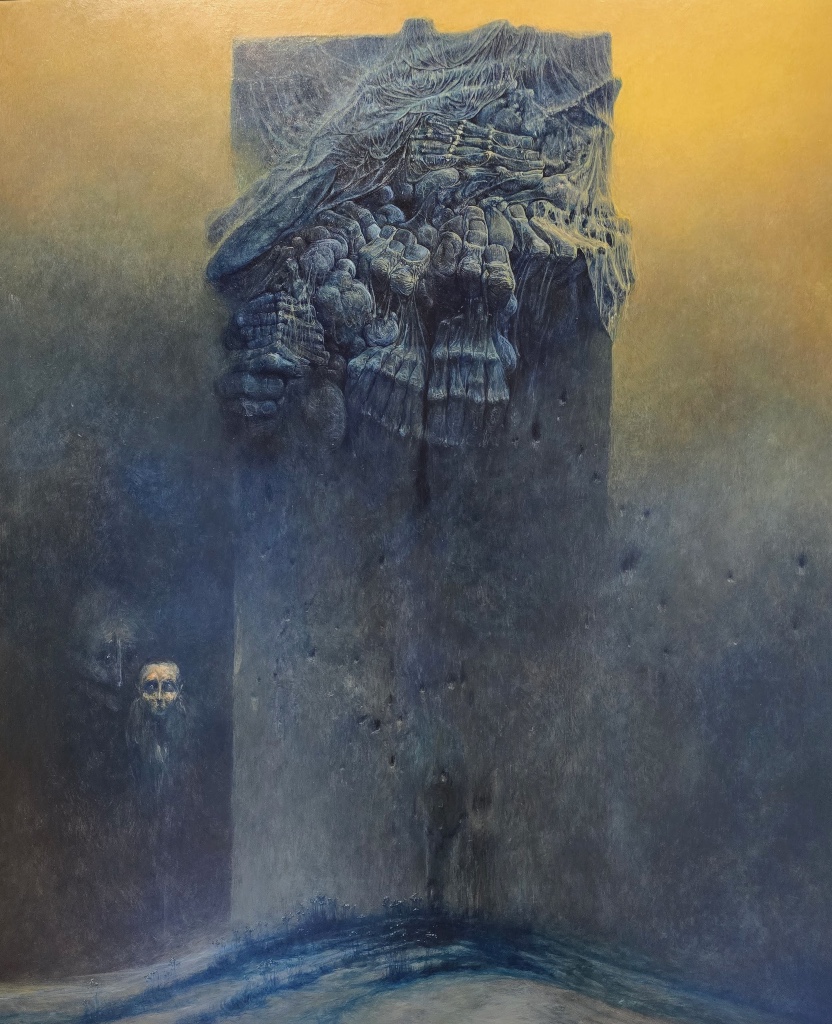
The Muzeum Sztuki Fantastycznej is located in a hip, revitalized part of town where the Muzeum Polskiej Wodki resides. You can take a tour through the incredible brick building, get some history of local vodka production, and do a tasting at the end. Since it was still too early for vodka, we opted to get some lunch at the Koneser Grill, had some delicious burgers and a local pilsner to wash it down with. There are lots of restaurants and small shops in the area, a fun way to spend an afternoon… See some art, learn some history, get some delicious food to eat and enjoy local libations; what else could you ask for?

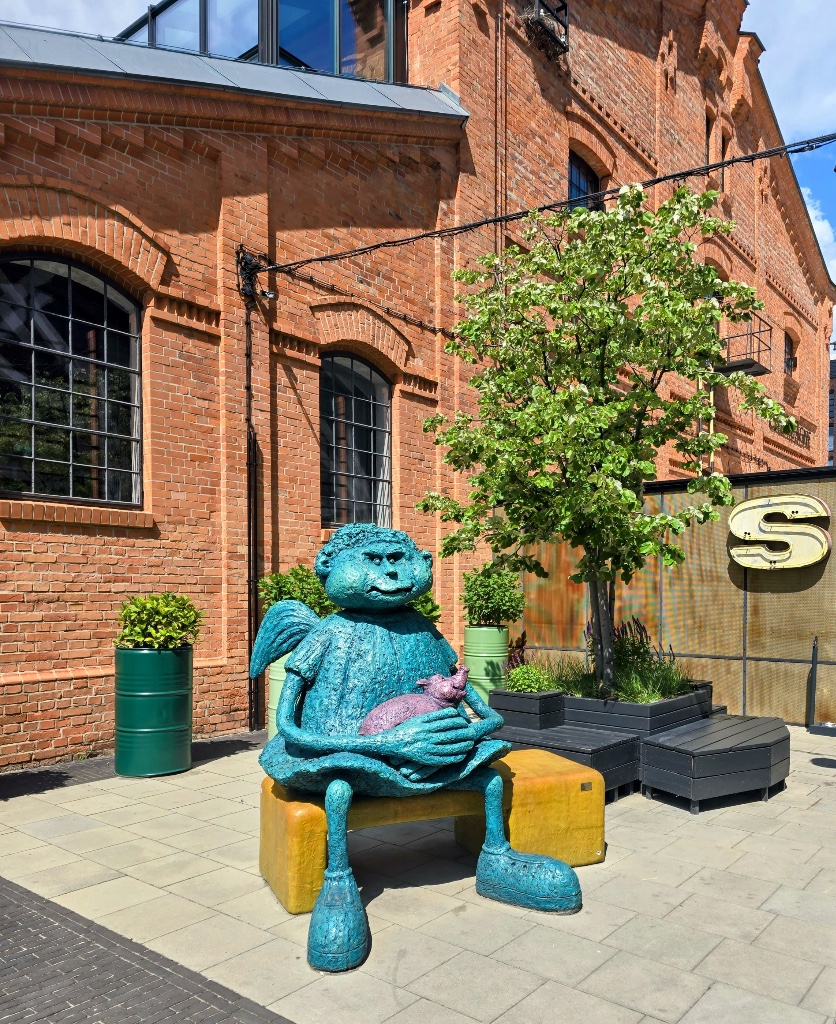
The food here is amazing, period. Of course it is absolutely necessary to eat some pierogi when in Warsaw. One of the best restaurants we found was Goscniec, where you can try a smorgasbord of Polish cuisine. Ruskie pierogi (stuffed with potato and cottage cheese) and potato pancakes with goulash are highly recommended, although everything coming out of the kitchen looked amazing.
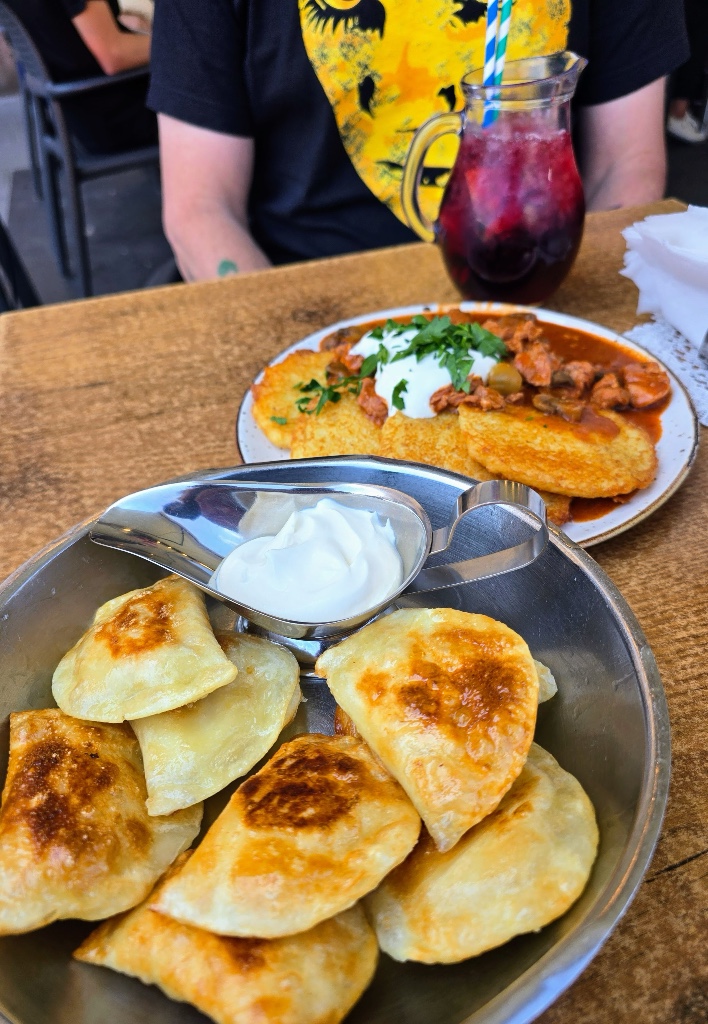
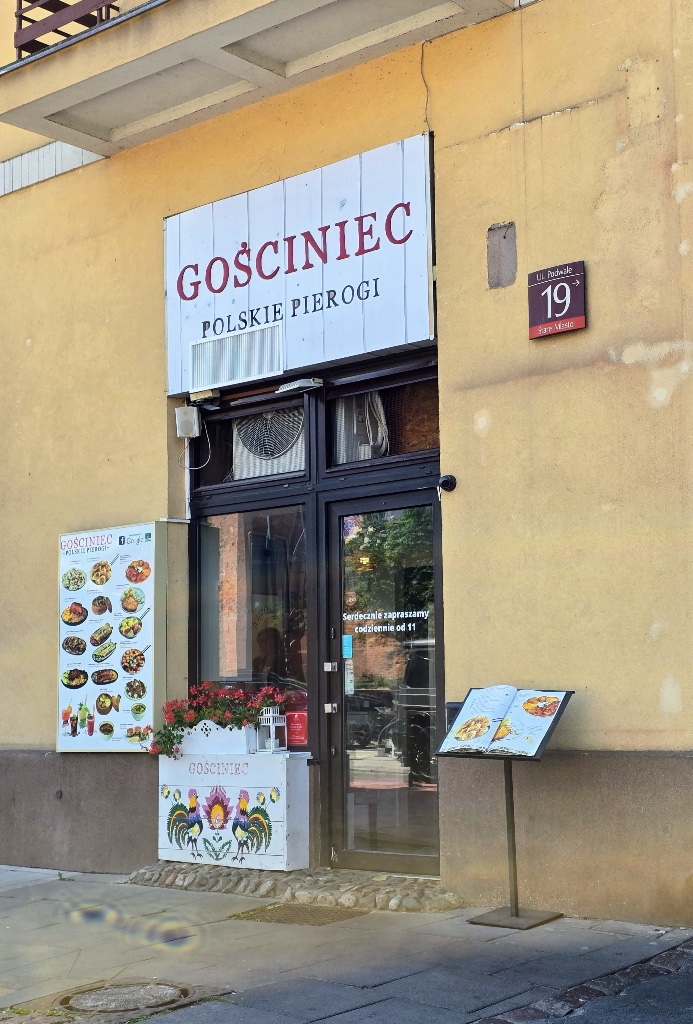
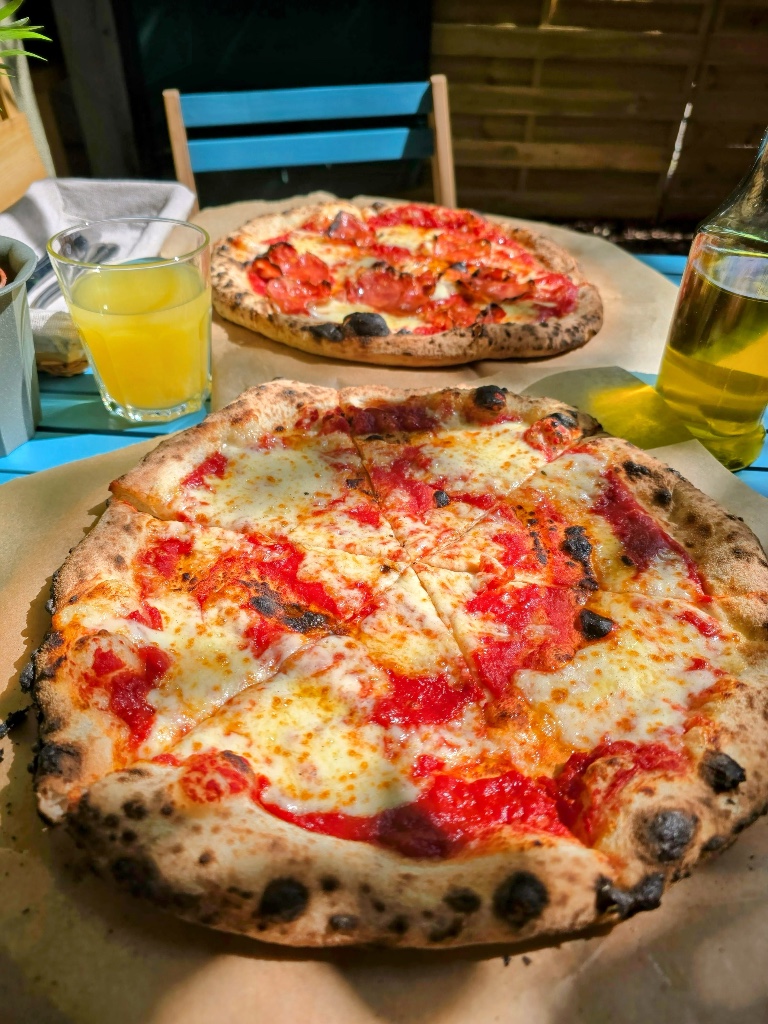
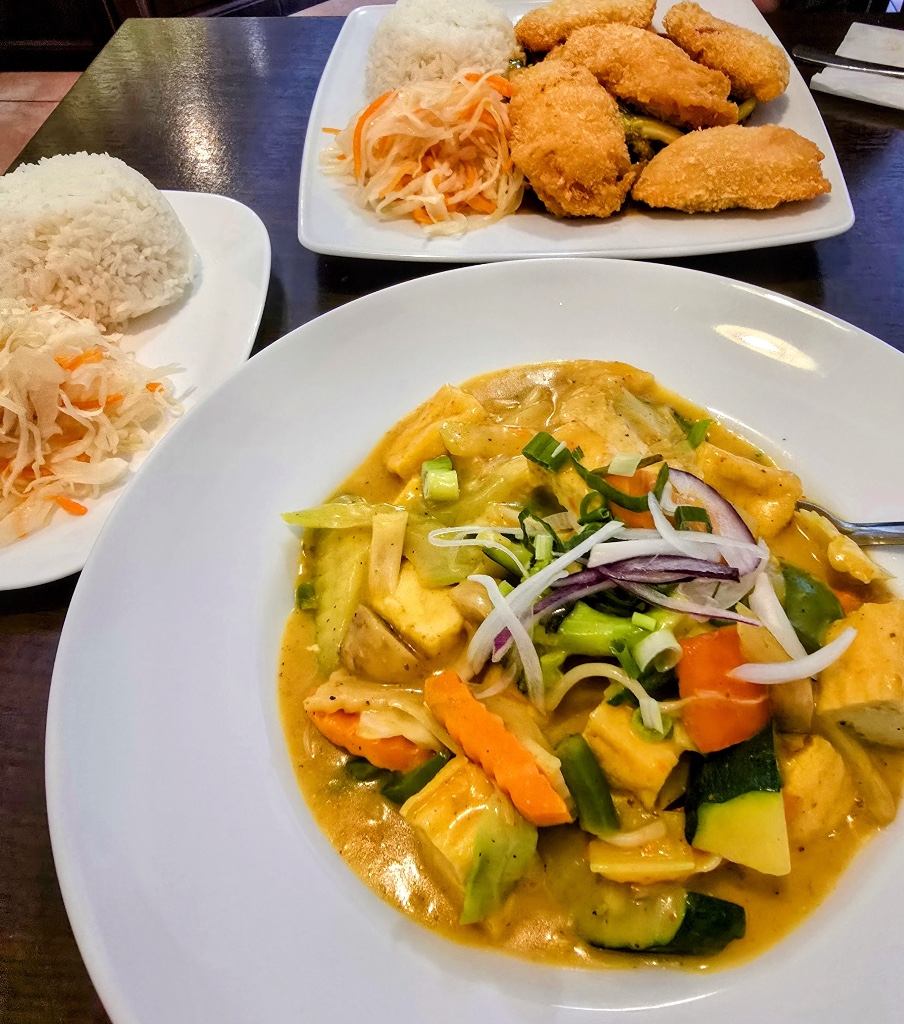
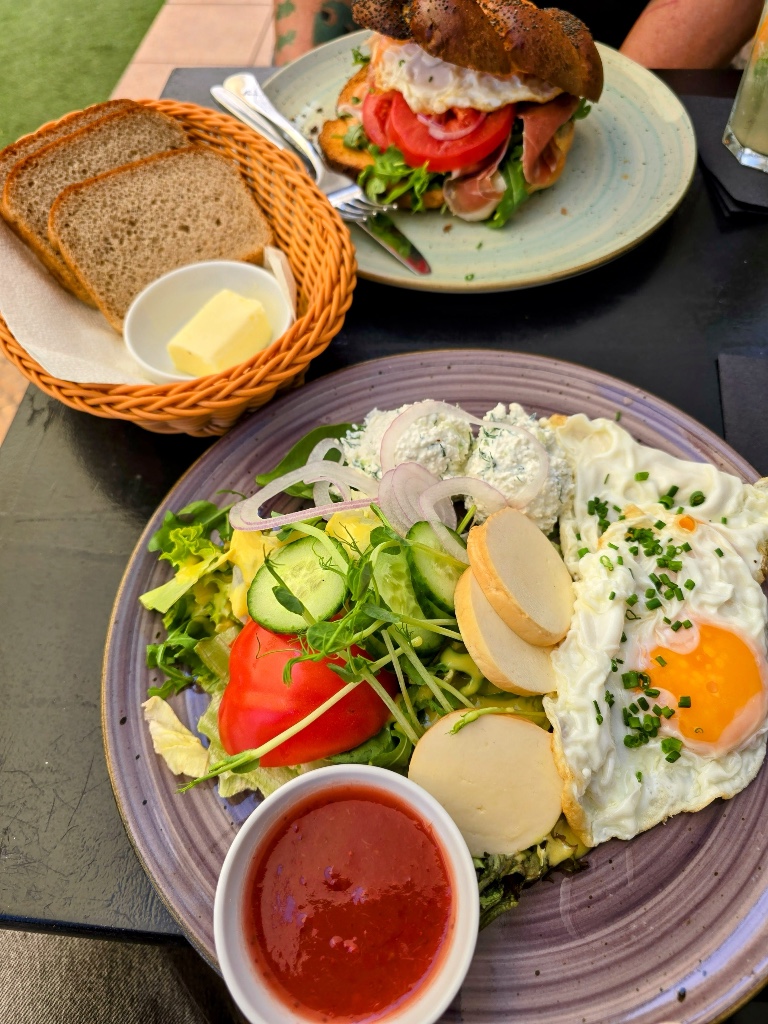
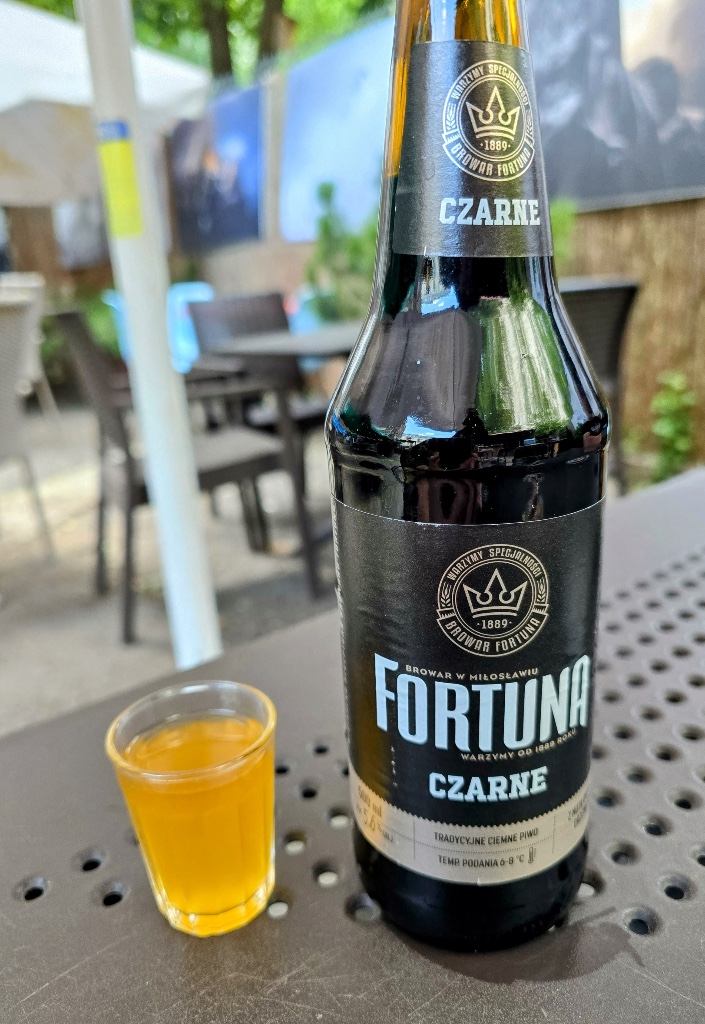
Breakfast here is also incredible. Fresh salad with dill cottage cheese, perfectly cooked eggs, smoked cheese and delicious bread are staples most places you go. There is any kind of Asian food you desire; Thai, Chinese, Korean, Indian… and even a few Mexican places too. Two of the most memorable meals though, were pizza at Ragazzi Da Mangiare, and Tikhari Modern Georgia. The Georgian salad was one of the most incredible salads I have eaten; tomatoes, cucumbers and onions with fresh dill and coriander-walnut pesto. The Chinkali, (Georgian dumplings) baked in bread with cheese was ridiculously good, in addition to the stuffed eggplant and peppers we ate alongside. It was one of the most perfect meals I have enjoyed in a while. The pizza at Ragazzi was simple but delicious, truly one of the best doughs have eaten.
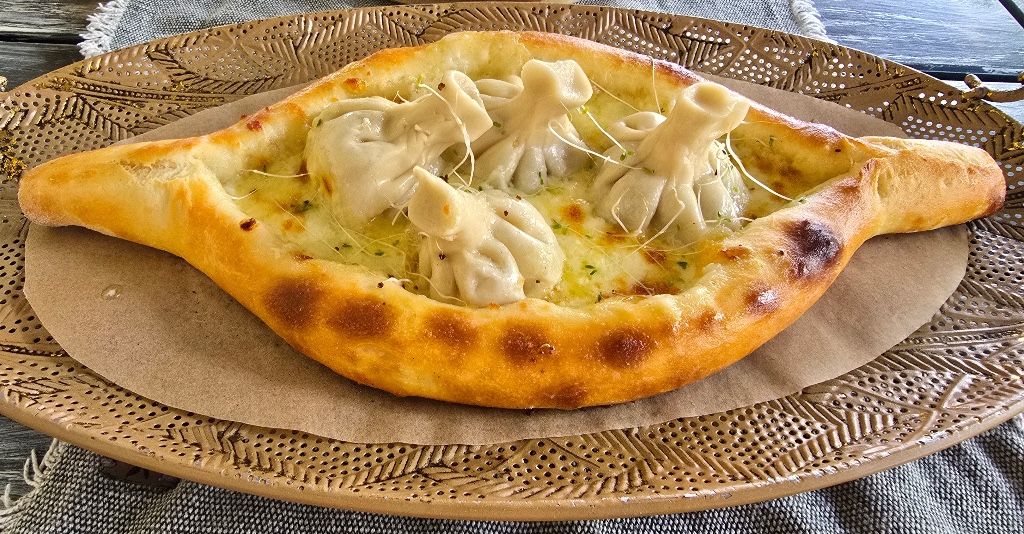

The city is full of great murals and street art, making this city more interesting with every street corner.
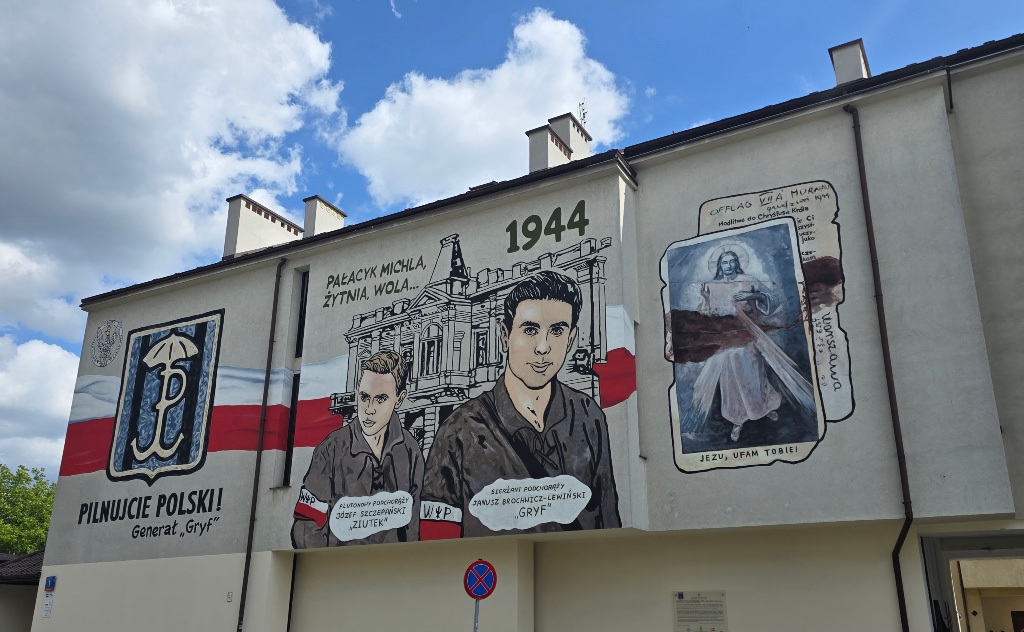

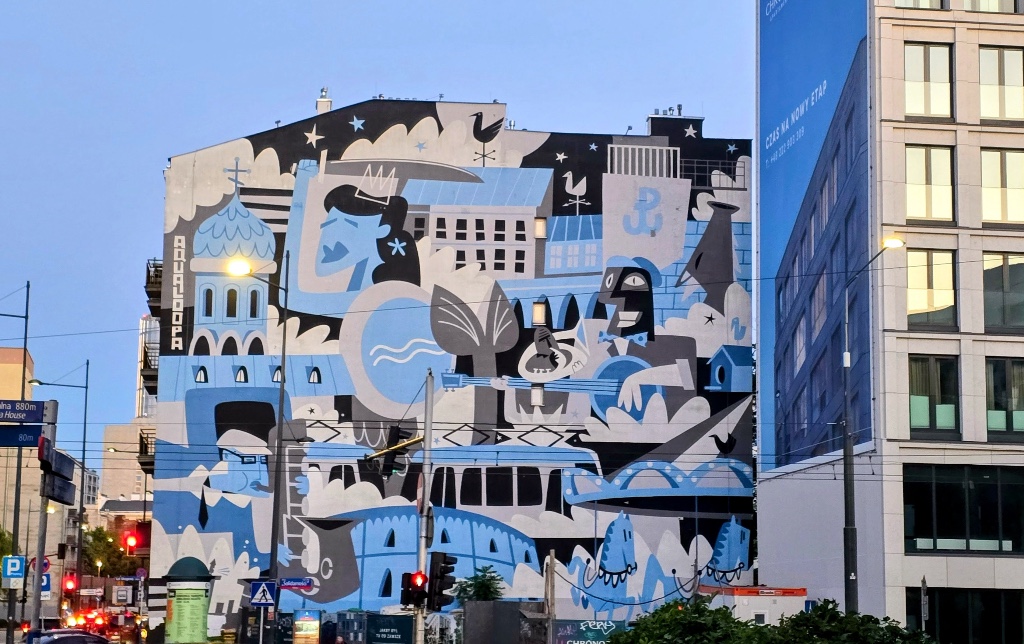
We wanted to check out some local music while we were here, and the Voodoo Club did not disappoint. There was a local metal night featuring Morhana, a folk metal band with a flautist. They write songs about Polish folklore, mixed with Scandinavian, Irish and Breton culture as well. It was a memorable evening with cheap, ice cold Kozel’s and some thrashing metal.
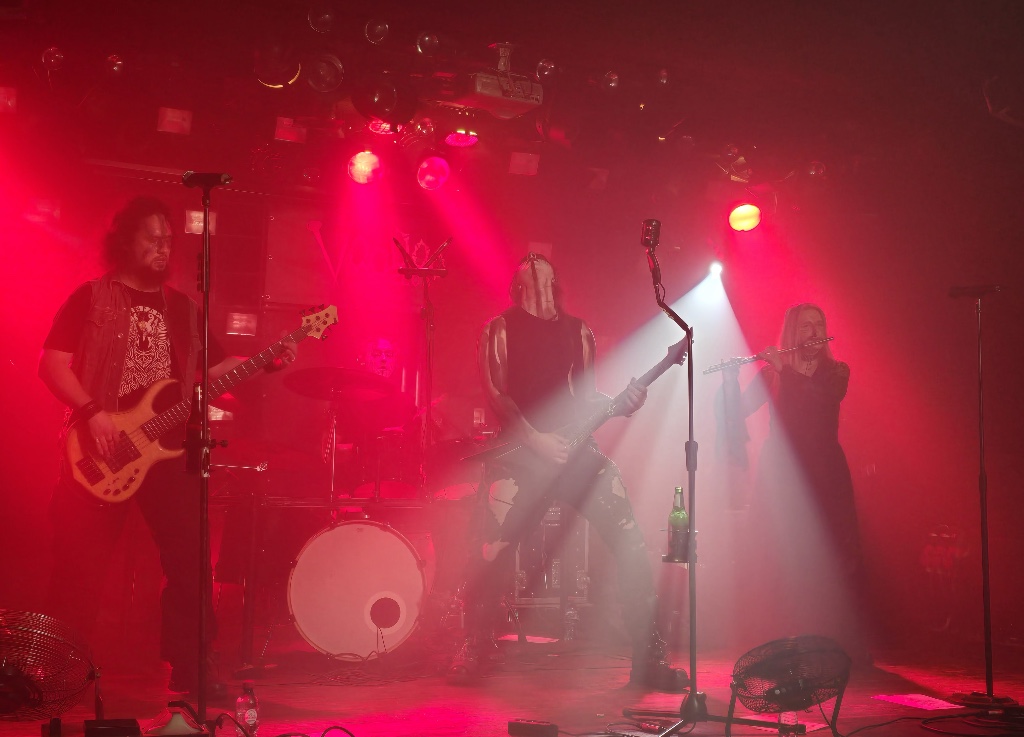
Warsaw in the summer is amazing. There are so many events, outdoor activities and incredible food offerings everywhere you go. Chopin in the park, football and concerts at the stadium, a vast array of special exhibitions and plenty of craft specialty beers to enjoy. Don’t forget to eat some Lody (ice cream) when you are here, a favorite Polish pastime.
